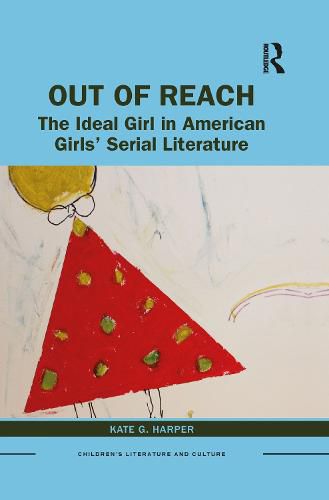Readings Newsletter
Become a Readings Member to make your shopping experience even easier.
Sign in or sign up for free!
You’re not far away from qualifying for FREE standard shipping within Australia
You’ve qualified for FREE standard shipping within Australia
The cart is loading…






Out of Reach: The Ideal Girl in American Girls’ Serial Literature traces the journey of the ideal girl through American girls’ series in the twentieth century. Who is the ideal girl? In what ways does the trope of the ideal girl rely on the exclusion and erasure of Othered girls? How does the trope retain its power through cultural shifts? Drawing from six popular girls’ series that span the twentieth century, Kate G. Harper explores the role of girls’ series in constructing a narrow ideal of girlhood, one that is out of reach for the average American girl reader. Girls’ series reveal how, over time, the ideal girl trope strengthens and becomes naturalized through constant reiteration. From the transitional girl at the turn of the century in Dorothy Dale to the liberated romantic of Sweet Valley High, these texts provide girls with an appealing model of girlhood, urging all girls to aspire to the unattainable ideal. Out of Reach illuminates the ways in which the ideal girl trope accommodates social changes, taking in that which makes it stronger and further solidifying its core.
$9.00 standard shipping within Australia
FREE standard shipping within Australia for orders over $100.00
Express & International shipping calculated at checkout
Out of Reach: The Ideal Girl in American Girls’ Serial Literature traces the journey of the ideal girl through American girls’ series in the twentieth century. Who is the ideal girl? In what ways does the trope of the ideal girl rely on the exclusion and erasure of Othered girls? How does the trope retain its power through cultural shifts? Drawing from six popular girls’ series that span the twentieth century, Kate G. Harper explores the role of girls’ series in constructing a narrow ideal of girlhood, one that is out of reach for the average American girl reader. Girls’ series reveal how, over time, the ideal girl trope strengthens and becomes naturalized through constant reiteration. From the transitional girl at the turn of the century in Dorothy Dale to the liberated romantic of Sweet Valley High, these texts provide girls with an appealing model of girlhood, urging all girls to aspire to the unattainable ideal. Out of Reach illuminates the ways in which the ideal girl trope accommodates social changes, taking in that which makes it stronger and further solidifying its core.